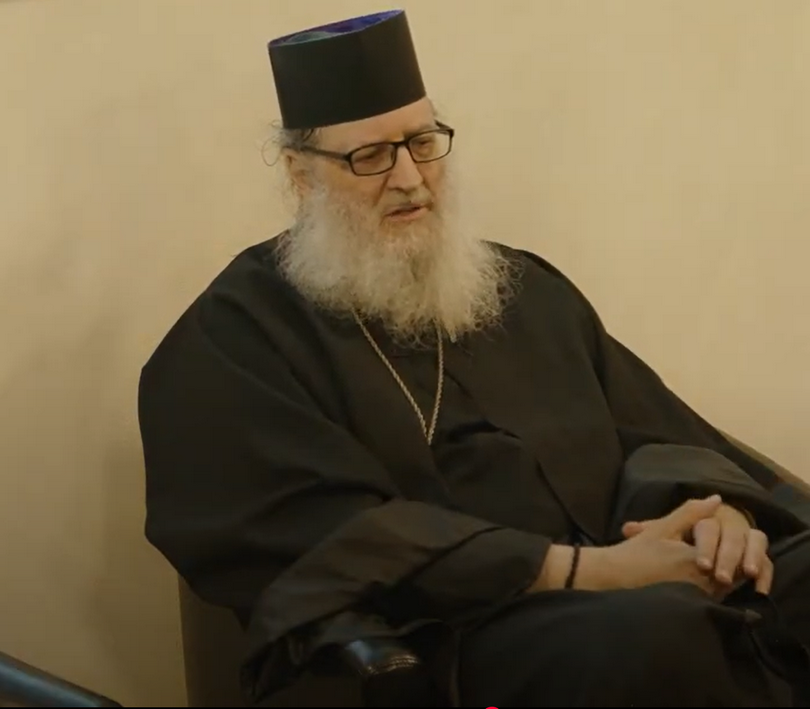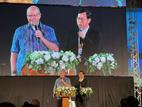On March 30, Presbyter Gregory Telepneff of Saint Photios Orthodox Theological Seminary presented a lecture entitled "The Egyptian Desert in the Irish Bogs: The Celtic Connection," arguing for a profound influence of early Egyptian Christian monasticism on the development of monastic life in sixth-century Celtic regions, particularly Ireland (Hibernia).
Presbyter Telepneff posited that many practices and spiritual ideals often considered uniquely Celtic find strong parallels, and likely their origins, in the Coptic monastic traditions established centuries earlier in the Egyptian desert. Christian monasticism is a way of life originating in the early church where individuals withdraw from worldly affairs to dedicate themselves fully to prayer and spiritual discipline, often living in communities; Egypt is widely recognized as a primary center of this early movement.
Presbyter Telepneff began by contextualizing his argument within the historical development of Irish Christianity. He pointed out a noticeable shift between the fifth century, associated with figures like St. Patrick, whose influences likely stemmed more from Gaul (modern France), and the sixth century, which saw the emergence of a highly organized and intensely ascetic monastic culture across Ireland. This transformation, he suggested, points toward the arrival and significant impact of external influences, which he identified as predominantly Eastern, specifically Egyptian.
Shared rigorous spiritual disciplines were presented by Presbyter Telepneff as a key line of evidence. He emphasized that the pronounced asceticism characteristic of sixth-century Irish monasticism mirrored Egyptian practices in its intensity and forms. Citing specific examples from the lives of well-known Celtic saints, he noted demanding physical feats, such as praying through the night with arms extended in the form of a cross (found in accounts of St. Kieran) or mortifying the flesh by standing in frigid water (attributed to St. Columba of Iona), practices he demonstrated had documented precedents among earlier Egyptian monastic figures like St. Pachomius and Evagrius Ponticus.
Presbyter Telepneff further explored how the understanding of monastic life itself carried similar spiritual weight in both traditions. He discussed the Celtic concept of monasticism as a form of ongoing "martyrdom," often categorized by colors (white for giving up worldly attachments, green for battling vices through austerity, red for literal martyrdom). While acknowledging the distinct Celtic terminology, Presbyter Telepneff argued that the core theological concept of monastic struggle as a form of martyrdom is deeply rooted in Egyptian ascetic thought. Similarly, he addressed the practice of peregrinatio—undertaking voluntary exile or long pilgrimages as a spiritual feat—asserting that while prominent among the Celts, it was an established ideal within Eastern monasticism itself, exemplified by figures like St. Anthony the Great.
A crucial element of the lecture, as detailed by Presbyter Telepneff, involved the transmission of specific spiritual frameworks, particularly through the pivotal figure of St. John Cassian. He explained that St. John Cassian, likely active in the late fourth and early fifth centuries, was instrumental in bringing the wisdom of the Egyptian Desert Fathers to the West. He elaborated that Cassian spent years in Egypt, meticulously studying the methods and teachings of these early monks before establishing monasteries in Gaul. It was through Cassian's highly influential Latin writings, primarily the Institutes and the Conferences, that Presbyter Telepneff stated that detailed Egyptian monastic psychology and practice became accessible to the Latin-speaking West.
Specifically regarding spiritual frameworks, he highlighted the adoption in Celtic monasticism of the sophisticated system for understanding and combating the "eight principal passions" or vices (such as pride, vainglory, gluttony, lust, anger, sloth or acedia, sadness, and avarice). He emphasized that Cassian explicitly documented learning this system from the Egyptian monks, particularly Evagrius Ponticus, and it was Cassian's clear articulation of these passions, their interrelations, and the methods for overcoming them (often by cultivating the opposite virtue) that profoundly shaped Celtic spiritual direction. Presbyter Telepneff further noted that Cassian's works also transmitted Egyptian teachings on spiritual discernment (distinguishing divine from demonic thoughts) and the importance of regular confession of thoughts (logismoi) to a spiritual elder, practices also evident in Celtic sources.
Presbyter Telepneff then demonstrated parallels in formal monastic rules and organization. Citing regulations found in rules attributed to the influential Irish missionary St. Columbanus, he pointed to specific injunctions regarding simple attire, strict rules on maintaining silence, absolute obedience, the necessity of seeking permission before leaving monastic grounds, and liturgical practices like the prohibition against kneeling in prayer on Sundays (the day of Resurrection). Presbyter Telepneff showed how these points closely mirrored regulations documented by St. John Cassian as deriving from Egyptian monastic founders like St. Pachomius, suggesting a direct lineage in regulatory practice mediated through Cassian.
The intellectual life within monasteries also provided connections, as Presbyter Telepneff explained. He noted that both the early Egyptian monks and later Celtic monks, particularly in Ireland, which became a renowned center of learning during the early Middle Ages, placed a significant value on study and the preservation of texts. He presented evidence indicating that key Eastern Christian writers, including prominent Egyptian figures (like Origen, Anthony, and Pachomius) and Cappadocian Fathers influenced by Egyptian thought, were known, copied, and studied within Irish monastic circles, likely through Latin translations facilitated by connections with the continent.
Turning to material culture, Presbyter Telepneff detailed tangible evidence supporting these links, particularly in Christian art. He highlighted stylistic similarities between surviving Coptic (Egyptian Christian) art and Celtic manuscript illuminations, citing examples like the famous Lindisfarne Gospels. These similarities, he observed, included preferences for elongated human figures; specific color palettes rich in greens, yellows, and reds; the intricate use of decorative dots and complex interlace patterns; and shared iconographic motifs such as birds or the depiction of the cross resembling a ship's mast. Furthermore, Presbyter Telepneff referenced chemical analyses of pigments used in Celtic manuscripts that identified materials like lapis lazuli and arsenic trisulfide, substances sourced from the East, arguing this confirmed established trade routes that could have served as conduits for cultural and religious exchange.
Architectural features and artifacts provided additional corroborating evidence, according to Presbyter Telepneff. He discussed distinctive structures such as the unmortared, corbelled stone beehive-shaped cells (clochans) characteristic of early Irish monastic sites like Skellig Michael, noting reports of similar constructions existing in Egypt during the relevant period. He also mentioned a specific type of small church design featuring barrel or wagon-vaulted ceilings found in both regions but considered rare elsewhere at the time. Other shared details he pointed to included the practical use of window sills as built-in bookshelves within monastic cells and stylistic similarities in artifacts like elaborately decorated metalwork brooches featuring interlace designs.
Regarding the pathways of transmission, Presbyter Telepneff acknowledged the widely accepted role of Gaul and figures like St. John Cassian as crucial intermediaries bringing Egyptian monastic ideals westward. However, he also presented fragmentary evidence suggesting the possibility of more direct contact between Egypt and the Celtic lands. He cited, while cautioning about their scarcity, historical references to a small number of Egyptian monks reportedly buried in Ireland (at Disert Uilaig), the existence of Irish manuscript texts that appear to be travel guides detailing routes to Egypt and the Holy Land, and accounts that could potentially describe Celtic pilgrims who had journeyed to the Nile Valley and returned with direct knowledge of its monastic life.
Finally, he briefly touched upon subtle liturgical clues potentially indicating shared influences. He observed, for instance, that the formal incorporation of certain daily prayer offices (specifically the First Hour, or Prime, and Compline) into the monastic liturgical cycle appeared to occur somewhat later in both the Egyptian Coptic tradition and the Celtic tradition compared to other major centers like Rome, hinting at a possibly shared, slightly distinct trajectory of liturgical development.
In conclusion, Presbyter Telepneff stated that the cumulative weight strongly indicates that Egyptian Coptic monasticism exerted a substantial and formative influence on the distinct character of sixth-century Celtic Christianity, highlighting a vibrant interconnectedness within the early Christian world across vast geographical distances.












